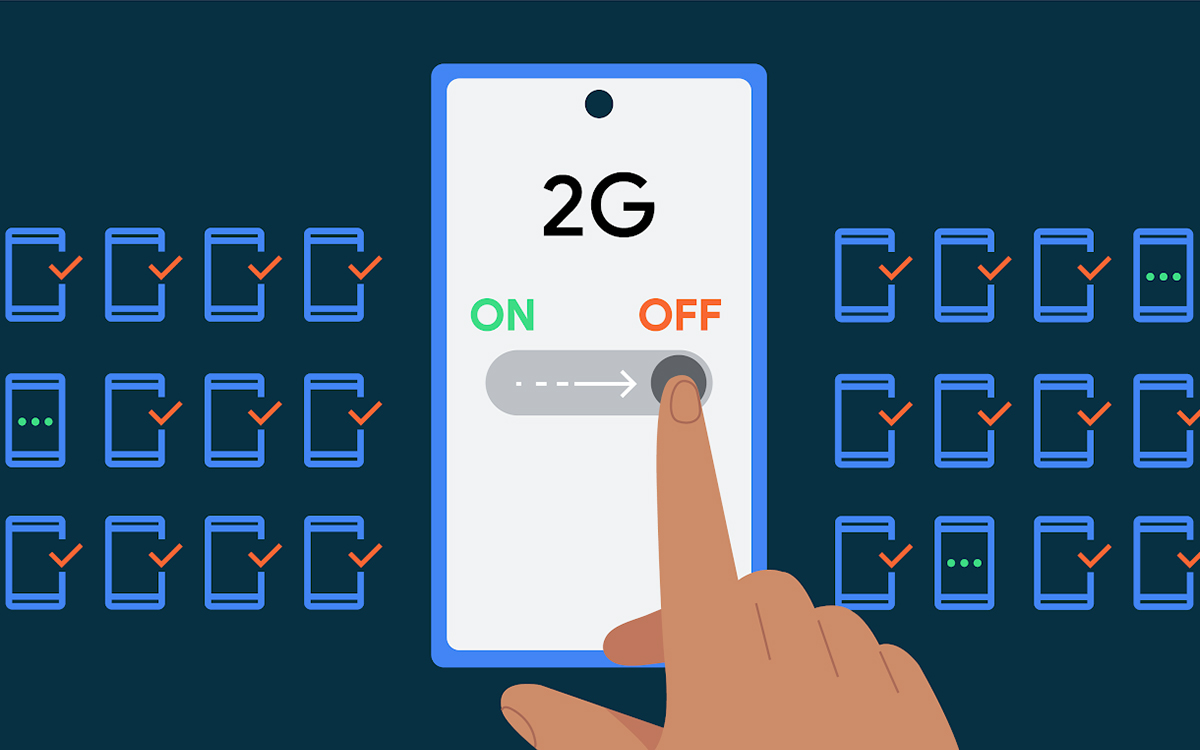To infect your smartphone or intercept your conversations and messages, hackers can use the mobile network. With Android 14, a few seconds will suffice to completely prohibit this type of attack.
With Android 14 coming soon and the latest beta just rolling out, Google is letting us know of a useful new security feature. It will allow secure our conversations and the messages we send via the mobile network. To achieve this, it is necessary to take an interest… in the 2G. This is both surprising and logical. Admittedly, the 2G network is already being phased out among operators and others are planning to do so in the years to come. Our devices, on the other hand, can still pick up this old standard, and they do it automatically when it is the only option available. Except that hackers can also force the connection to 2G without you knowing it.
To do what ? Just because the 2G network is much less secure than 4G or 5G can be. Hackers can then much more easily infiltrate your smartphone and intercept calls or SMS conversations. It is this kind of attack that has pushed Google to offer Android 12 a option to disable 2G on the Pixel 6. The firm goes even further with Android 14.
Android 14 makes it possible to prevent attacks via the network with a single gesture
Now, Android assumes that “network traffic should be end-to-end encrypted”. Concretely, a new option will appear on smartphones running Android 14 and will allow require mobile network encryption via a simple on/off switch. Once running, it will be impossible to connect to an unsecured network (2G in the lead). note that emergency calls are of course excluded from the system.
Also Read – Android 14 wants to prevent you from installing fake Google app updates
Google specifies that the functionality is primarily intended for companies managing a fleet of devices. However, since it already exists at the user level in a similar form, it is very likely that it will be declined for individuals. There remains the question of its availability on the phones already in circulation: the option requires modifying what is called the Material Abstraction Layerwhich is done as soon as the mobile is manufactured.
